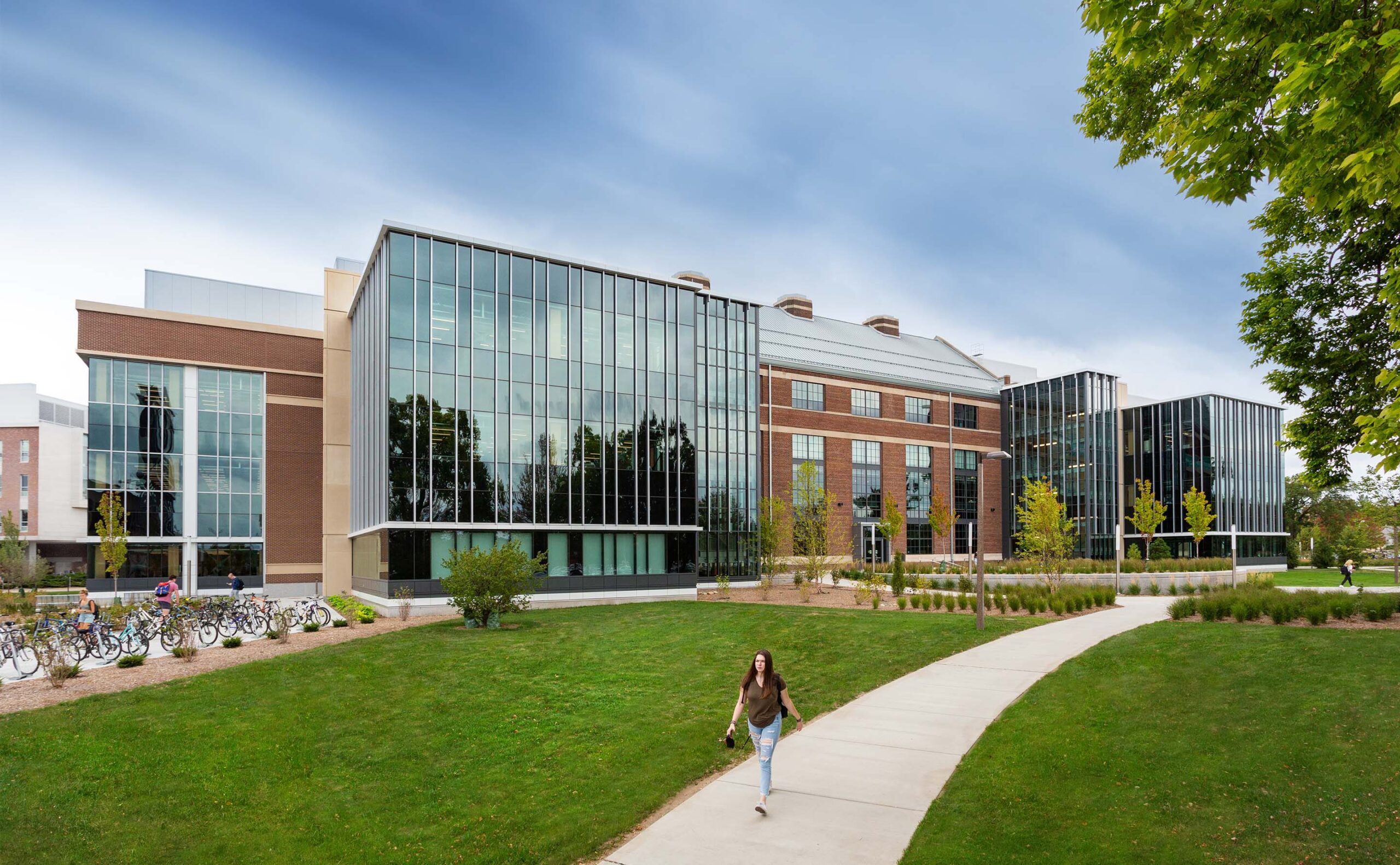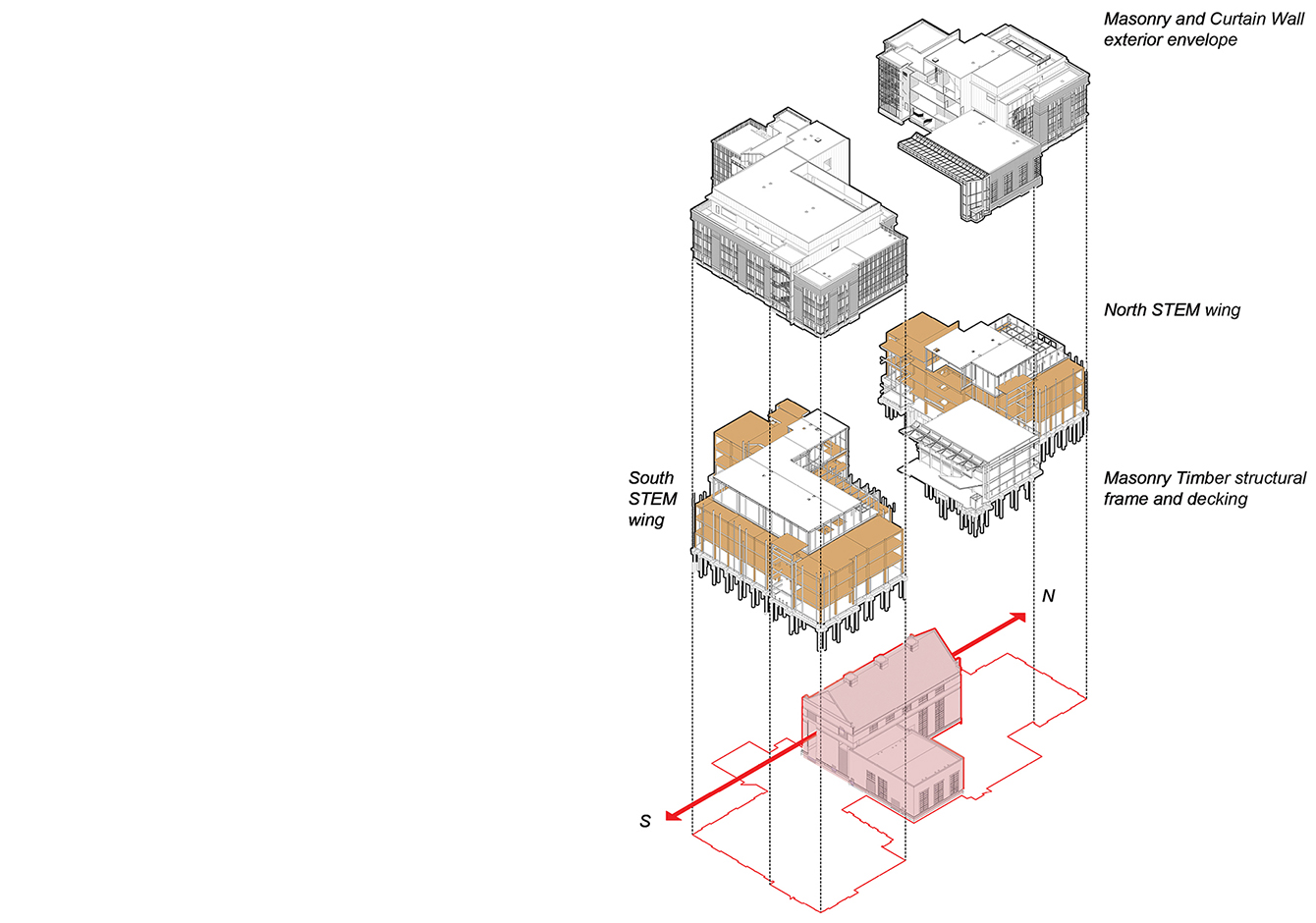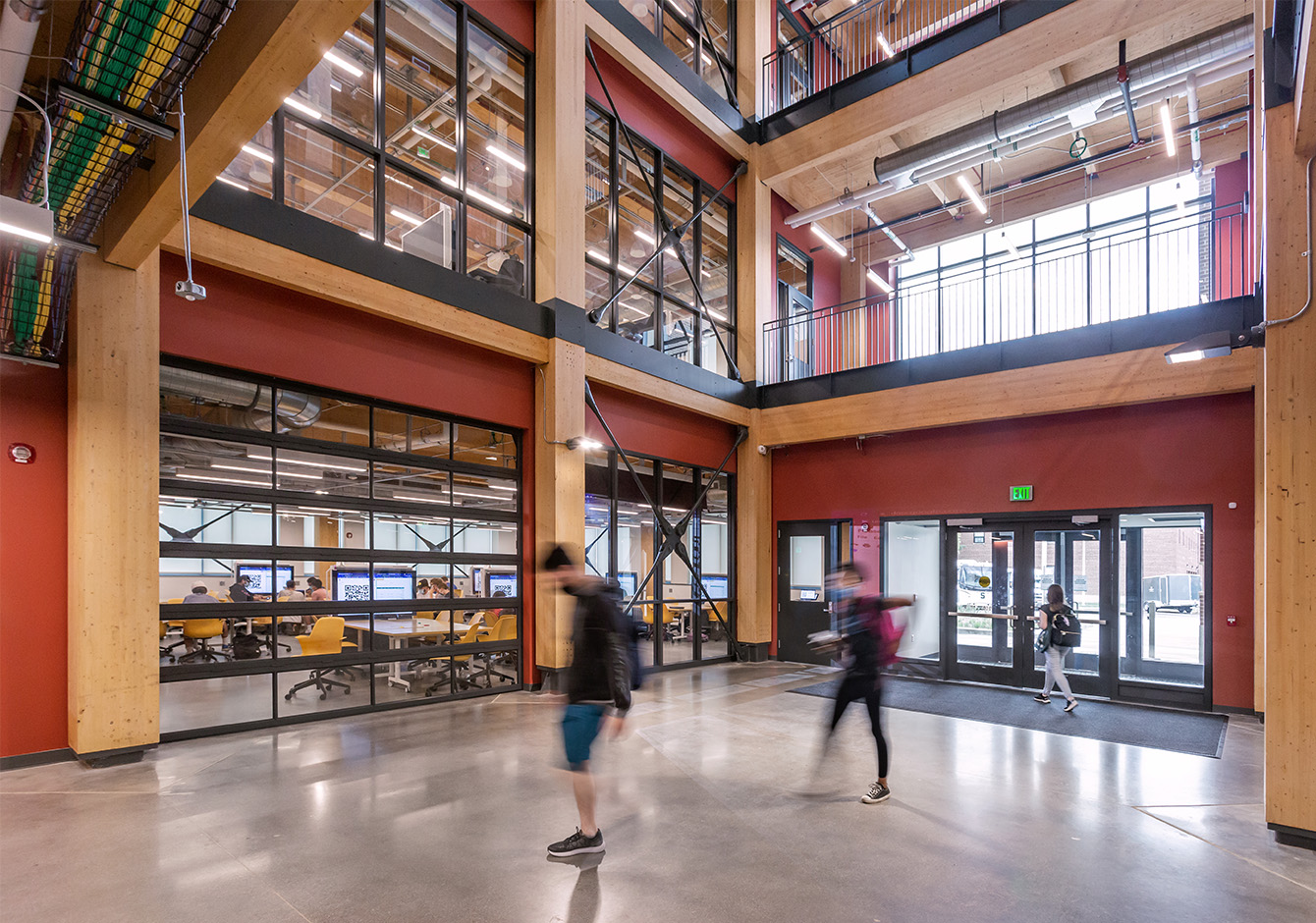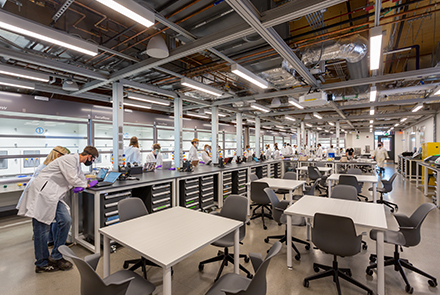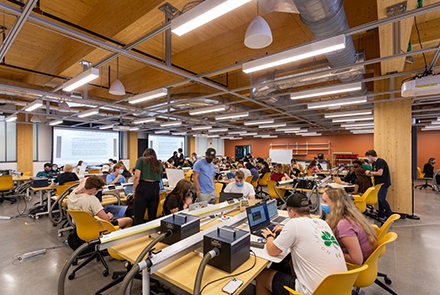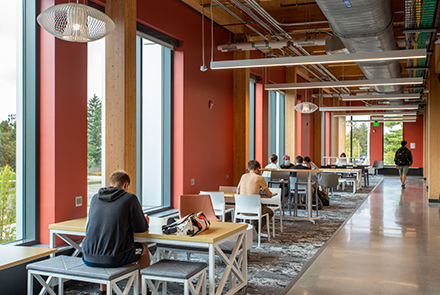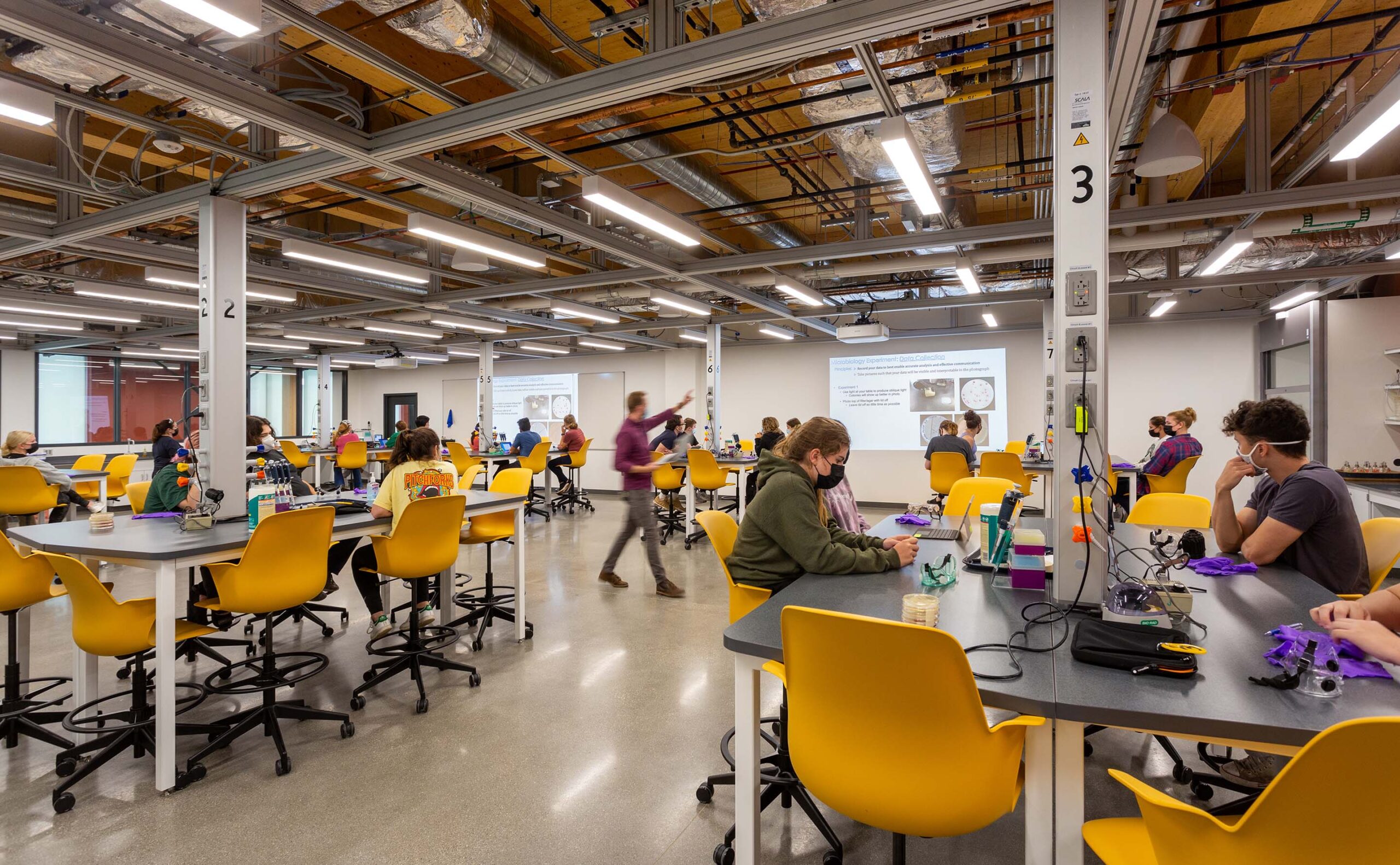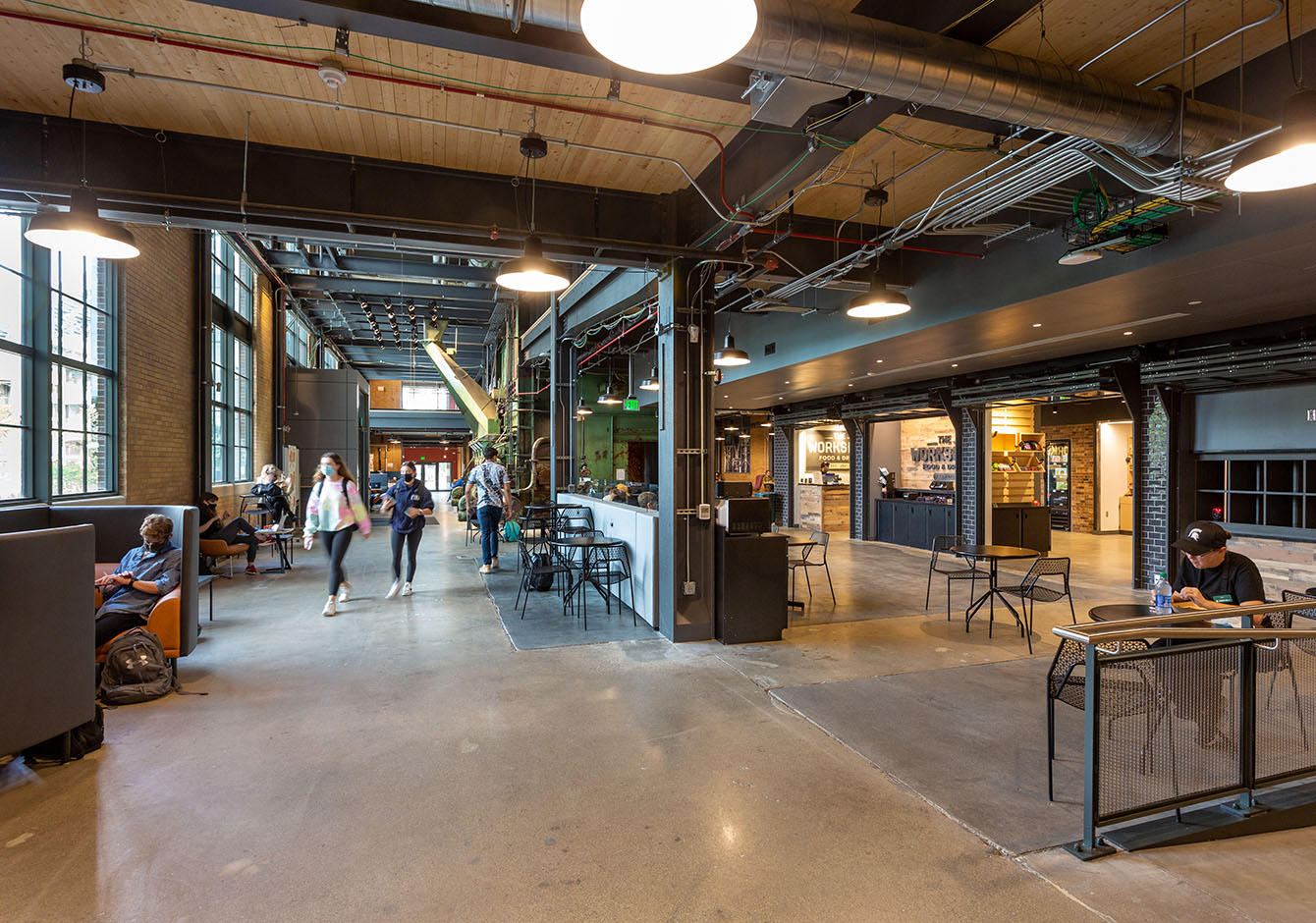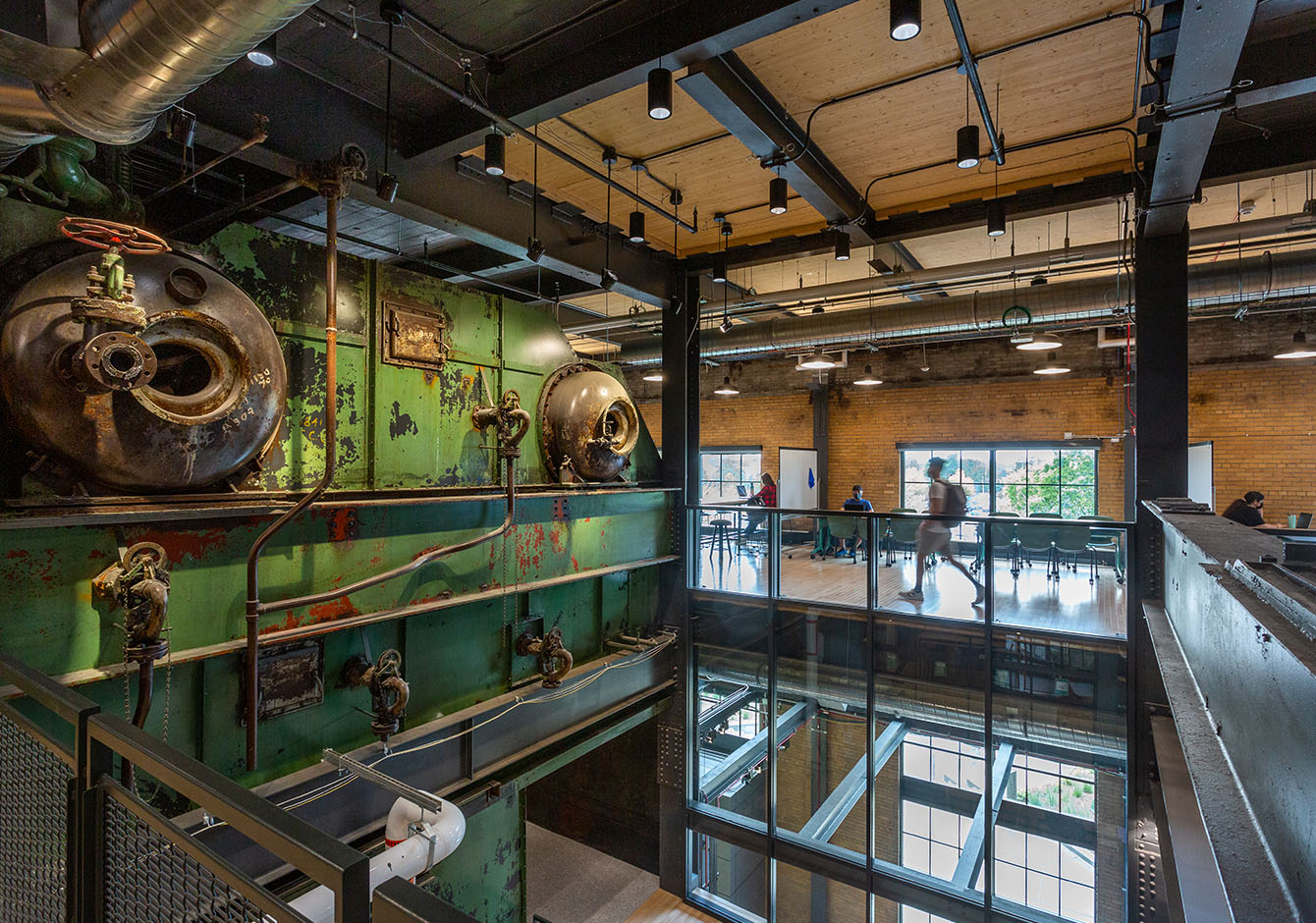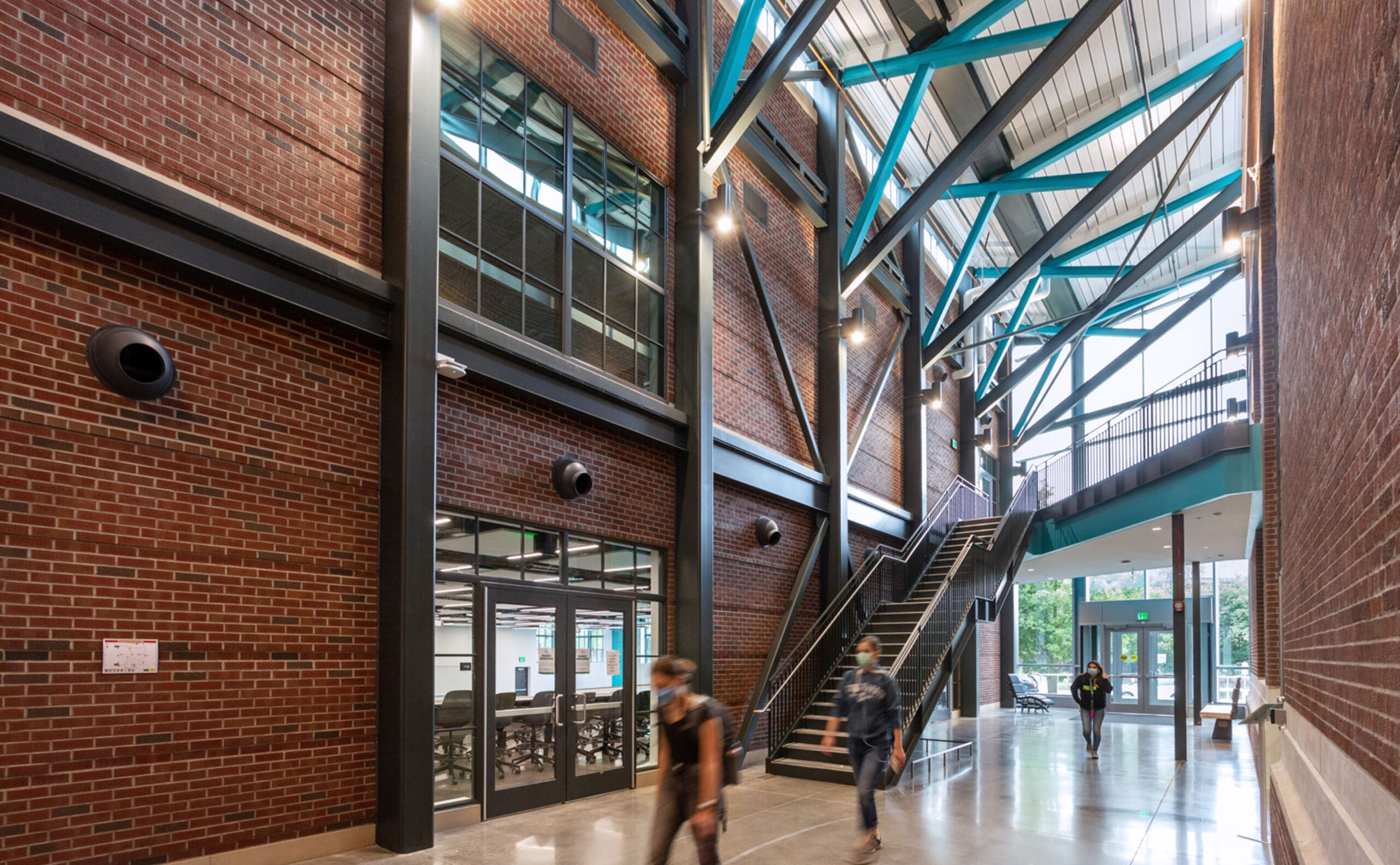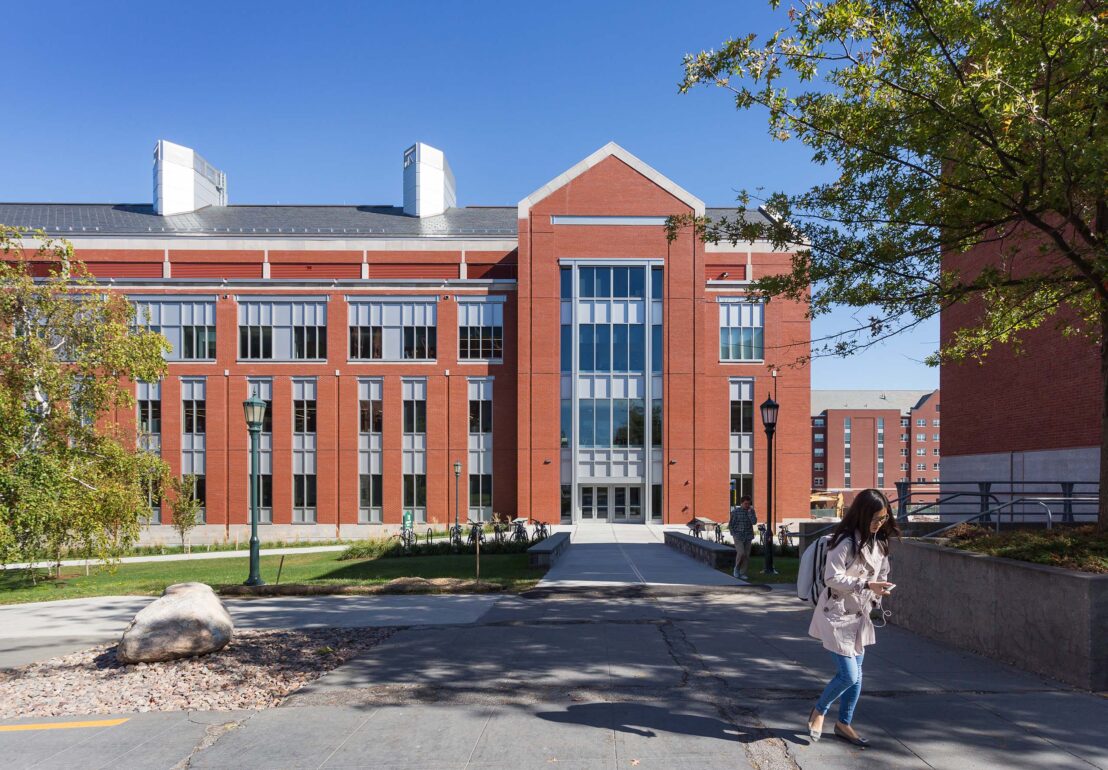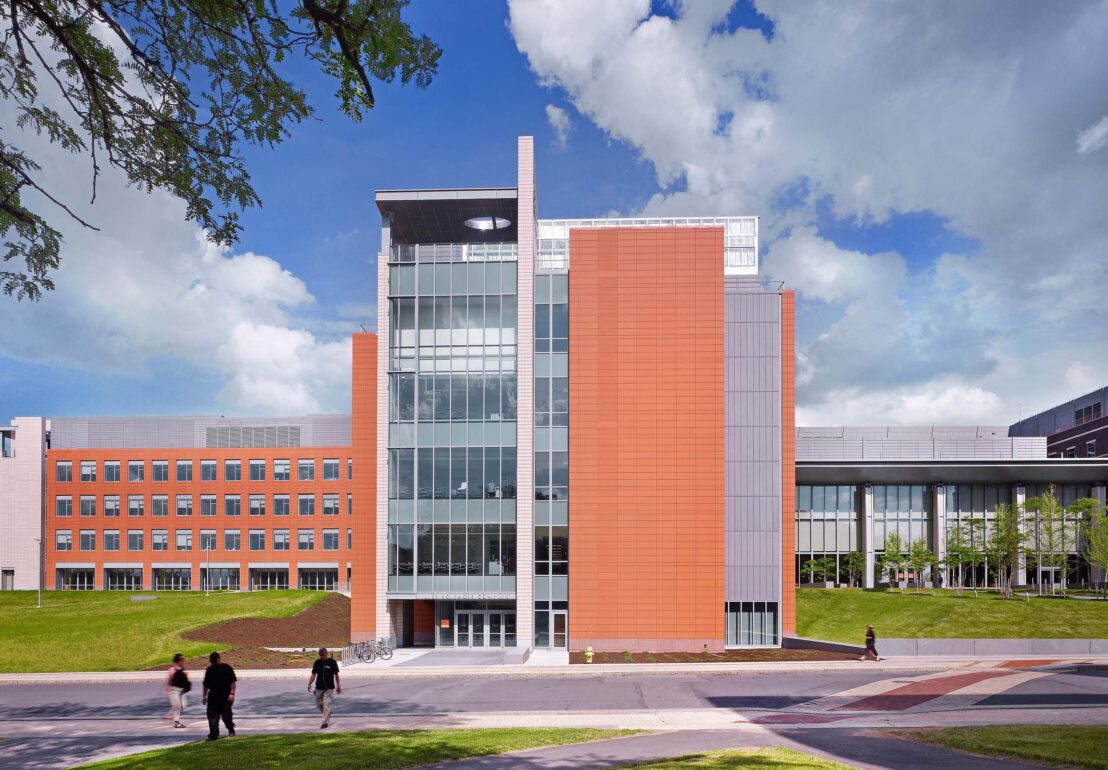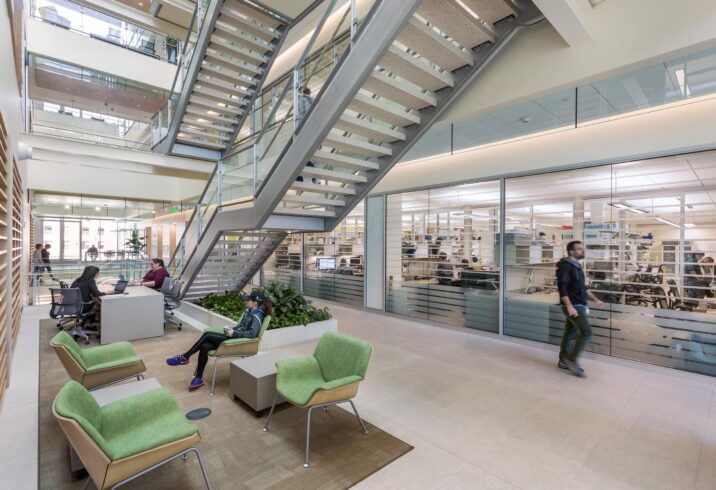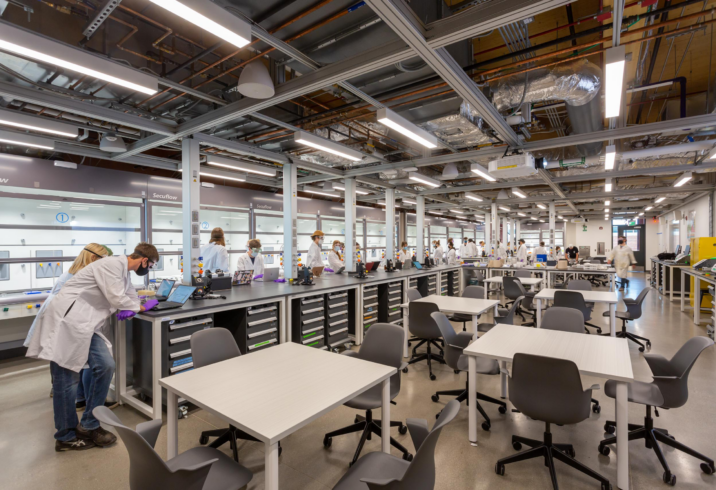The laboratory wings are home to learning spaces for Biology, Chemistry, Physics, Computer Science, and Engineering. The teaching labs are all designed to maximize flexibility, utilizing an overhead service grid with specially designed vertical service drops to allow table locations to be easily and quickly reconfigured. Further, the suite of rooms includes movable walls in strategic locations so that spaces can be enlarged or subdivided as learning needs evolve. All of the spaces embrace an active-learning approach, emphasizing team-based learning, and a variety of break-out and collaboration spaces adjacent to the labs support the new team-based pedagogies.
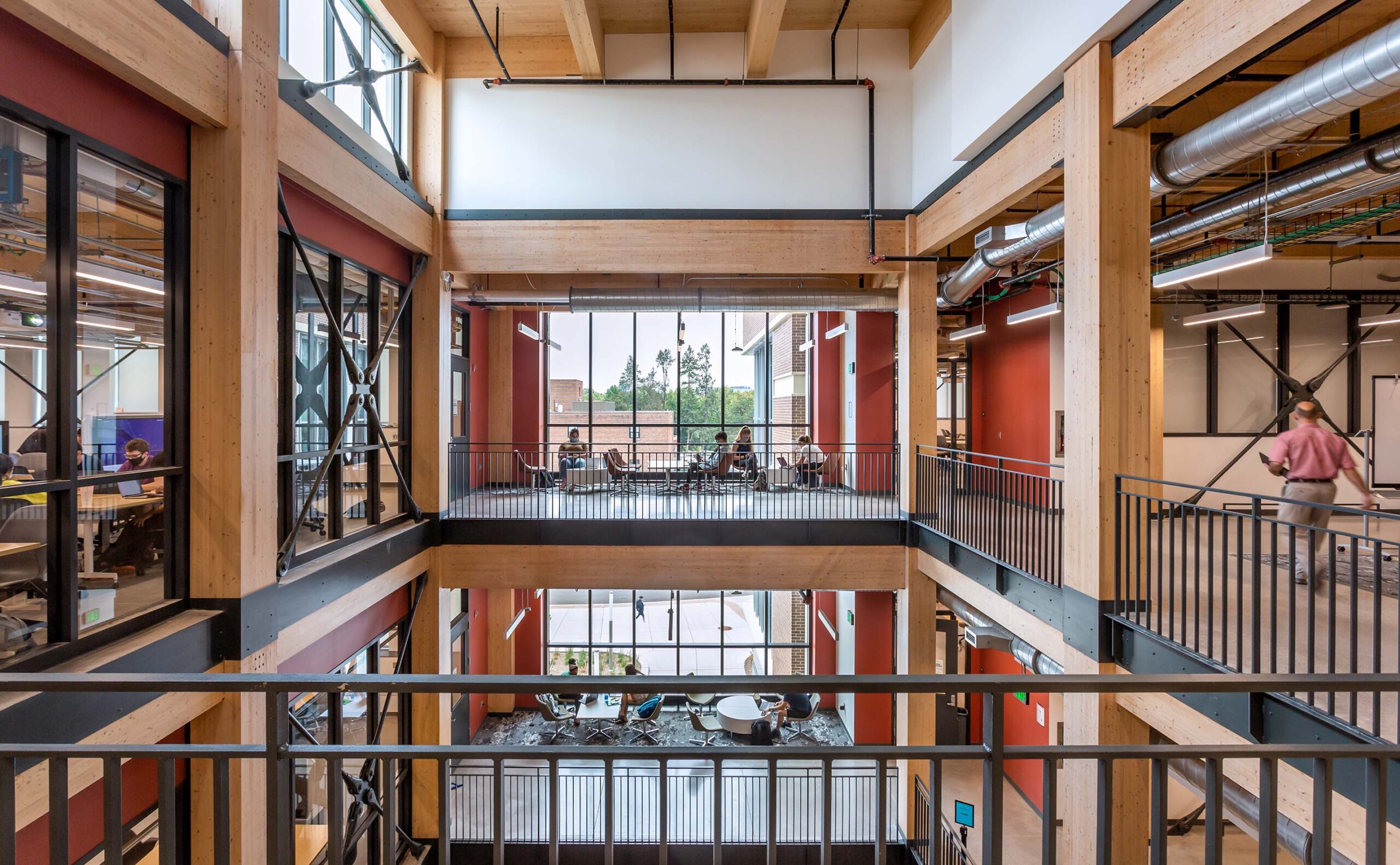
Michigan State University
STEM Complex
East Lansing, Michigan
Size
134,600 gsf new
48,600 gsf renovation
Services
Feasibility Study
Programming
Lab Planning
Architecture
Role
Ellenzweig
Design Architect and Laboratory Planner
IDS
Architect of Record and Designer of Power Plant Renovation
Awards
I2SL Sustainable Laboratory Award for Excellence in Decarbonization
U.S. WoodWorks Design Award for Wood in Schools
Forest Stewardship Council Leadership Award
Associated General Contractors Build America Grand Award Winner
Associated General Contractors Build Michigan Grand Award Winner
ENR Midwest Best Projects Award of Merit
The STEM Complex brings together into one facility a variety of undergraduate teaching laboratories previously dispersed across the Michigan State campus. More than 100,000 square feet of teaching laboratories accommodate the increased demand for instruction in science, technology, engineering, and math-related courses. The Complex consists of two laboratory “wings” and a decommissioned 1940’s power plant, repurposed to house key program spaces. The laboratory wings and the renovated power plant create an integrated, flexible, interdisciplinary center for STEM teaching and learning.
The STEM Complex was the first building in the state of Michigan to use mass timber for its load-bearing structure. The structural frame of the labs is comprised of cross-laminated timber (CLT) floors and walls, and glue-laminated columns and beams. In the repurposed power plant, all of the new floors employ cross-laminated floor decking.
